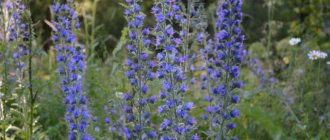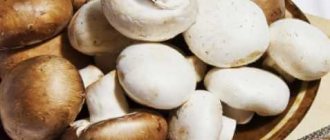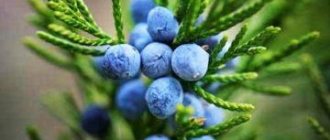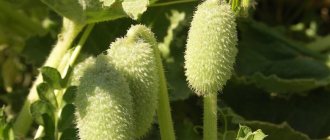What it looks like and where it grows
China and North America are considered the homeland of the common or angustifolia sucker. In ancient times, magical properties were attributed to the plant. It was believed that the bush rejuvenates the body and gives strength.
The height of the plant reaches 4 m. The leaves have a silvery sheen. The lush crown determines the presence of decorative properties. The plant is drought-resistant. The shrub prefers saline soils. It produces many adventitious roots that can adapt to almost any soil. The common sucker is undemanding to air purity, but it does not tolerate frost.
The shrub is characterized by rapid growth and gradual curvature. It propagates both by cuttings and by cuttings and seeds. The trunk is covered with spines, which are not found in cultivated species.
The flowers of the common oleagin are small in size. Their diameter does not exceed 1 cm. The flowers are located on rather short stalks. The shrub is cross-pollinated by insects. During the flowering period, the aroma can be felt from afar.
The fruits of the common oleaster are represented by dry false drupes, which are distinguished by their oval shape. Their length can reach 2 cm. The berries include a mealy pulp of a yellowish tint. The taste of the fruit is sweet. The berries are juicy and slightly astringent.
It is noteworthy that the fruits of the oleaginous angustifolia are formed through the ovary and the perianth. Its lower part grows, becoming fleshy. Then it covers the ovary.
The berries of the common oleaster are considered the most valuable part. They are distinguished not only by their taste, but also by their beneficial properties. The fruits retain their valuable substances for four months. Dry berries are added to porridge and bread. They are placed in decoctions and infusions intended for preventive and therapeutic purposes.
The common or narrow-leaved sucker lives about 65 years
The plant can be found in Russia, Kazakhstan and Central Asia. The shrub prefers steppes and river banks.
Botanical description
Fetus
| Flowers and leaves |
Shrub or low tree 3-7 m high, sometimes with thorns.
Young shoots are silvery, the rest are gray.
The leaves are linear or oblong-lanceolate, lanceolate-oval or ovate, with petioles, 5-8 cm long, pointed, narrowed towards the base, grayish-green above, silvery-white below with silvery scales covering both sides of the leaf.
Flowers up to 1 cm long, very fragrant, solitary, in the axils of the leaves; perianth silvery-white with yellowish veins, yellow inside. Flower formula: ∗ K ( 4 ) C 0 A 4 G 1 _ {\displaystyle \ast K_{(4)}\;C_{0}\;A_{4}\;G_{\underline {1))} [ 5]. The fruit is a drupe about 1 cm long, oval or ovoid-spherical, reddish-yellowish with a silvery-white sweetish-mealy edible pericarp.
It blooms in the middle zone in June, in the south of Kazakhstan and in the countries of Central Asia in the second and third decades of May. The fruits ripen in August–October.
Propagated by seeds, cuttings, layering, and also renewed by shoots (does not produce root suckers).
Chemical composition
Elf angustifolia, the photo of which is located above, has beneficial properties. The following parts of the plant are used in folk medicine:
- leaves;
- fruit;
- flowers;
- resin;
- bark
We recommend reading: Muraya: beneficial properties and contraindications
The raw materials of the common or angustifolia oleaster include substances beneficial to health:
- carbohydrates;
- proteins;
- organic acids;
- potassium and phosphorus salts;
- essential oil;
- tocopherol;
- vitamin C.
Useful properties of Eleven angustifolia
Products made from medicinal plants produce the following effects:
- astringent;
- antibacterial;
- expectorant;
- diuretic;
- antiviral;
- anti-inflammatory.
The fruits of the medicinal bush improve memory and facilitate the progression of malaria. Berries are prescribed for pathologies of the cardiovascular system due to their tonic and restorative properties.
Important! Leaves and flowers are also used for medicinal purposes.
Methods of preparation and use
Various medicinal formulations are made from raw materials. In particular, infusions and decoctions are made based on the leaves. Aqueous solutions help with the following diseases:
- ARVI accompanied by fever;
- rheumatism;
- gout;
- radiculitis.
Important! The drugs are intended for both internal and external use.
A decoction of the fruits of the oleaster angustifolia is recommended for use for diarrhea.
Useful properties and applications
The plant is planted to strengthen dams, forest belts, and rivers. On the roots of the oleaster there are nodules with nitrogen-fixing bacteria, which help improve even the most depleted and poor soil.
The bark and leaves are used in the process of dyeing and tanning leather, and the resin is included in varnishes and paints. Furniture and musical instruments are made from wood.
Fresh berries of Eleven angustifolia are eaten . In the Caucasus and Central Asia, food is prepared from the fruits of the plant, the dried fruits are ground into flour, which is used for cooking jelly, baking gingerbread and other baked goods, added to other fruits when cooking compotes, and spiced wine is made from them.
Tea brewed from oleaster flowers with the addition of a small amount of leaves turns out to be very aromatic: it is rich in vitamins, has a tart but delicate taste, and is slightly oily.
Eleven angustifolia flowers have a strong aroma. The honey that bees collect from it is amber in color with a pronounced sweet smell and pleasant taste.
The fruits are used in medicine: the drug pshatin is made from them - a binding agent in the treatment of the digestive system. Even short-term oral administration helps improve the general condition and improves the function of the gastrointestinal tract. Rinsing with pshatin helps cure inflammatory diseases of the oral cavity.
An infusion of freshly ripened oleaster fruits is taken as a homeopathic remedy. The medicinal properties of Eleven angustifolia are successfully used for inflammatory processes, heart disease, respiratory tract diseases, rheumatism, gout, and hypertension. It removes parasites from the body and is used as a wound-healing substance.
The drupe of the tree contains:
- sugar;
- natural monosaccharide fructose;
- protein responsible for construction processes in the body;
- phosphorus, which ensures the growth of bone and dental tissues;
- salt;
- tannin (tannic acid), used to remove toxins;
- organic acids;
- coloring matter.
The leaves contain ascorbic acid, the bark contains alkaloids, tannins and dyes, and the flowers contain essential oil, which is successfully used in aromatherapy for heart disease.
Use of Eleven angustifolia
The raw materials of the bush have a unique composition, which explains the presence of beneficial properties. The plant is actively used not only in cooking, but also in folk medicine.
Anti-inflammatory
The fruits of the common oleaster are a storehouse of useful substances. Their value lies in their destructive effect on pathogenic microorganisms.
To prepare a composition used for inflammation, take:
- dry berries - 30 g;
- boiling water - 1 tbsp.
The drug is made like this:
- The fruits are poured with boiling water.
- The mixture is put on fire and simmered in a steam bath for half an hour.
- Before use, the aqueous solution is filtered and the original volume of the product is restored.
An infusion of the fruits of the common oleaster can be stored in the refrigerator for up to two days.
Drink 2 tbsp of the product. l. 15 minutes before meals. The drug is taken three times a day
To normalize digestion
An infusion that includes:
- 5 tbsp. fruits of the common oleaster;
- 3 tbsp. cool water;
- 2 tbsp. boiling water
The product is made according to the instructions:
- The berries are ground in a meat grinder.
- The raw materials are poured with water and left for six hours.
- After the specified time, the mass is filtered and then brewed with boiling water.
The composition of the fruits of the oleaster angustifolia is taken in 2 tbsp. l. before and after meals
For hypertension
An infusion is used to lower blood pressure. The product includes:
- 6 g of common oleaster flowers;
- 1 tbsp. hot water.
The composition is made as follows:
- The raw materials of the medicinal plant are filled with the required amount of water.
- The product is infused in a steam bath for 15 minutes.
- The drug is filtered and the original volume is restored.
An infusion of oleaster angustifolia flowers helps reduce blood pressure and strengthen the heart muscle.
For skin rashes
The tincture allows you to eliminate dermatological diseases. It is prepared from the following components, which are taken in a ratio of 1:10:
- common oleaster seeds;
- vodka.
The recipe is easy to follow:
- The raw materials are filled with an alcohol base.
- The bottle is placed in a warm place.
- After ten days, the drug is filtered.
Tincture of oleaster angustifolia is taken 20 drops three times a day on an empty stomach.
From worms
The plant has antiparasitic properties. A useful decoction is made from the following components:
- 50 g of common oleaster berries;
- 250 ml water.
We recommend reading: Jida (loch) silver: beneficial properties of the berry and contraindications
Preparing the drug is not a difficult task:
- The fruits are poured with hot water.
- The composition is brought to a boil and cooled.
- The product is filtered before use.
A decoction of the fruits of the oleaster angustifolia, which is drunk after meals four times a day, is prescribed for helminthic infestation
General strengthening composition
The tincture is highly effective. It is prepared based on the following components:
- 100 g flowers (fresh or dry);
- 1 liter of vodka or alcohol, 40 degrees strength.
The healing agent is made in accordance with the recipe:
- The raw materials are placed in a dark glass bottle and filled with an alcohol solution.
- The container is tightly sealed and the contents are infused for a month.
- After the specified time, the composition is filtered.
Tincture of Eleven angustifolia flowers is taken 25 drops.
Important! The product is dissolved in 0.1 liters of water.
For edema
In the treatment of somatic pathologies, the flowers of Eleven angustifolia are often used. To prepare the composition you need to take:
- 6 g dried flowers;
- 1 tbsp. boiling water
The decoction is made in stages:
- The raw materials are steamed with boiling water.
- The product is infused in a steam bath for 20 minutes.
- The liquid is filtered and the original volume is restored.
Drink 1/3 tbsp of a decoction of oleaster flowers. three times a day 15 minutes before meals
Important! The composition is recommended to be taken for colitis and bronchitis, gout and rheumatism, high fever, and hypertension. This is a good anthelmintic and wound healing agent.
For purulent wounds
Common oleaster is distinguished by its beneficial properties. The advantage of the plant is the ability to use all above-ground parts. For example, fresh leaves are applied to purulent wounds. They are thoroughly washed and crushed to a paste before applying to the skin.
Leaf leaves relieve inflammation and accelerate the regeneration process
Important! The plates include substances with antibacterial properties.
Properties of silver oleaster for human health
For many years, humanity has known the medicinal properties of silver euphemum. In folk medicine, fruits and leaves are used for medicinal purposes. Crushed fresh leaves help with wounds and purulent discharge from the skin. The shrub has wound-healing and anti-inflammatory effects.
It is recommended to take it for colds to obtain an antipyretic and expectorant effect. Useful for sore throats. The plant has an antibacterial effect.
Effectively helps get rid of helminths. Flowers are used for hypertension and heart failure. The leaves are used for external use for rheumatism and radiculitis. The bark can be used for diarrhea.
Beneficial features
The fruits of the bush contain a large amount of useful substances. It contains proteins, carbohydrates, and acids. It is useful to make decoctions and tinctures from them. This universal product is useful in cosmetology and folk medicine.
To prepare raw materials, you need to collect leaves in the first half of summer. Flowers should be collected in early June. You can dry them in special devices. Dry raw materials can be stored for two years. The plant is taken to increase immunity and normalize blood pressure.
Harm
The plant is safe and healthy. Harm from it can occur if used incorrectly or if the dosage is exceeded. An allergic reaction may also occur. In other cases, no harm occurs.
Contraindications for use
Since harm from this plant is practically impossible, the list of contraindications will not be long. The exception is individual intolerance, allergies and the consequences of cross-reactions.
Take with extreme caution during pregnancy and lactation. It is better to do this under the supervision of a doctor. Children under 12 years of age are allowed to take a decoction of the fruit.
Only dried fruits are taken for:
- renal failure;
- fever;
- open stomach ulcer.
It is important to remember that rotten, unripe fruits should not be used. They can cause poisoning and intoxication.
Collection and preparation
In the field of traditional medicine, various medicinal parts of the plant are used. The collection time depends on the maximum accumulation of valuable substances in the raw material. For example, leaves are harvested until mid-July. It is advisable to collect flowers from May to early June.
The raw materials are dried either under a canopy or in dryers. The above-ground parts of the plant are laid out in a thin layer on a clean cloth or paper. The preservation of beneficial nutrients depends on the lack of access to sunlight. When using a special dryer, the temperature should not exceed 50 °C.
Important! The shelf life of raw materials is two years.










